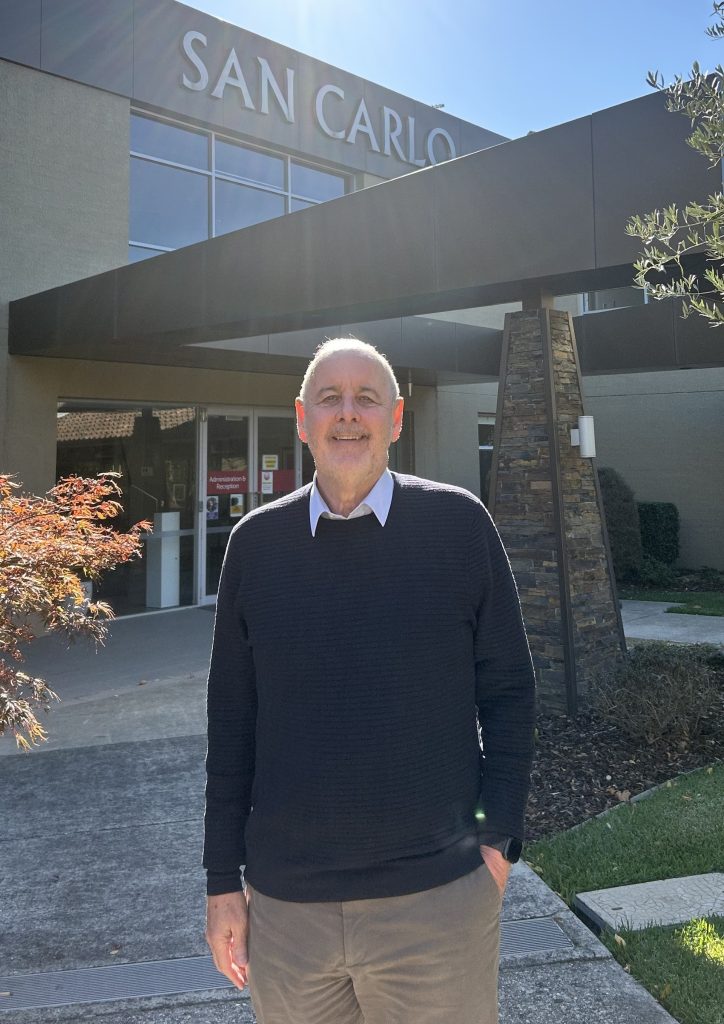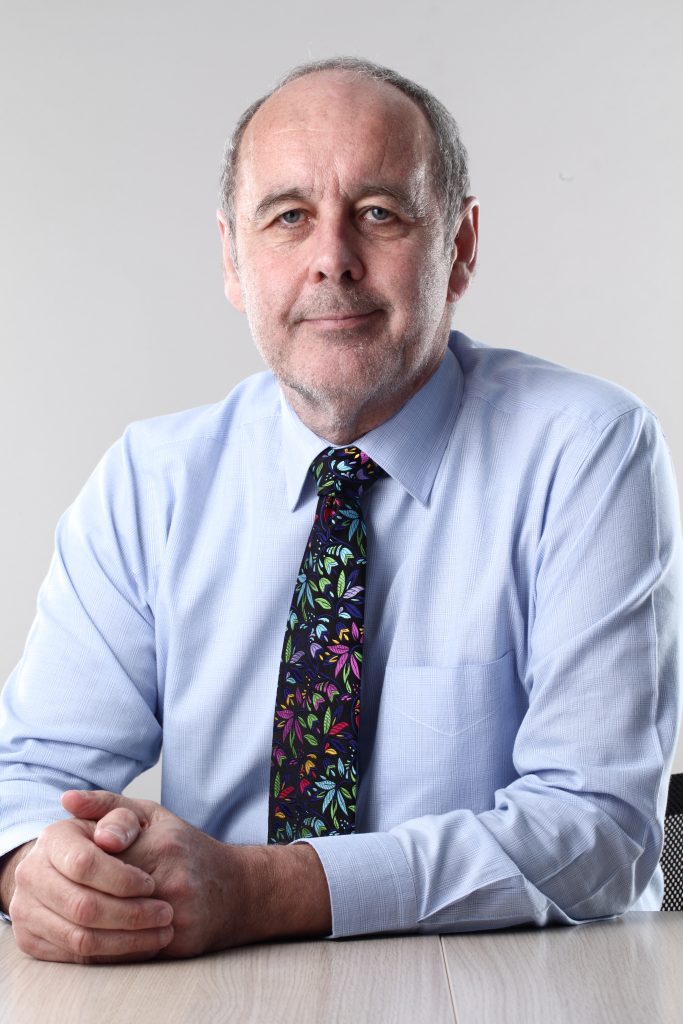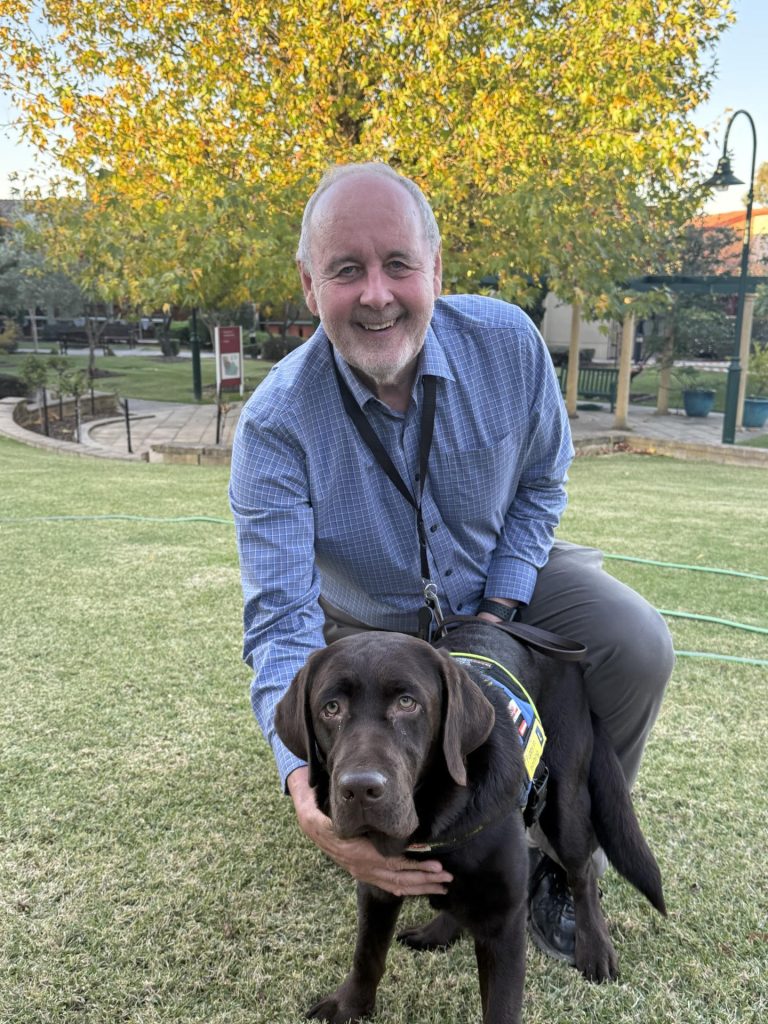Brooker Executive Perspective:
Ron Hooton, CEO of San Carlo Homes for the Aged
In a sector defined by both complexity and care, Ron Hooton brings a rare blend of technological curiosity, human-centred leadership, and deep operational insight. As CEO of San Carlo Homes for the Aged, his journey from 1970s technologist to transformative health and community leader is anything but conventional. In this edition of Brooker Executive Perspective, Ron shares the pivotal moments, mindset shifts, and bold ideas, like AI-powered companionship, that continue to shape his visionary approach to leadership.

Leighton:
It’s great to be chatting to you, Ron. Can you describe to me your current role?
Ron: I’m CEO of San Carlo Homes for the Aged, it’s a residential aged care facility in South Morang with 142 beds.
Leighton:
And if I were to take you from that role right back to early on in your career. What was your first job when you entered the workforce?
Ron: My first job was in technology back in the mid-1970s when computers were this very exciting new thing. These machines had the processing power of today’s iPhone, but took up entire rooms! I was working in banking, and it gave me a real lust for technology’s potential. We were right on the edge of electronic banking and point-of-sale transactions. We didn’t even have ATMs back then, now people hardly use them because we don’t use cash anymore. It’s been an incredible span of years as a technologist.
Leighton:
Are there any learnings or reflections from that early technology career phase that helped to shape who you’ve become professionally?
Ron: Despite all the excitement, technology is really just variations on a theme. Even today’s AI is just complex programming using data. What I find most useful is looking at technology for its potential, what it can do for clients, for staff, and for operational efficiency. Seeing it as a tool is really valuable.
Leighton:
It’s quite a journey from early technology roles to CEO in the nonprofit world. Were there any pivotal moments and learnings along the way?
Ron: Absolutely. I talk about having three careers: technologist, general manager, and CEO. The most pivotal moment was doing my MBA. It taught me skills, but more importantly, it changed how I think – more strategically, drawing more inputs into decisions. I doubled my salary within 18 months, which was pretty cool when you’re younger.
Another pivotal moment happened when I was sitting in a CEO’s office with the CFO. The CEO had a pile of contracts 12-14 inches high and said, “I can’t be bothered with this. Who wants to take a look?” I could see the CFO literally running for the door, so I said I’d have a go. That “have a go” mentality led me from IT manager to running strategy, negotiating funding contracts, and managing clinical areas over four years.
The lesson is to take opportunities when they’re there, even if it means more work. Going into places where “I don’t know” has been such an exciting learning opportunity throughout my career.
Leighton:
You’ve talked about transitioning into leadership. What core principles guide your leadership style?
Ron: “Do unto others” is a major principle, not that I am particularly religious. But treating people the way they want to be treated came about 20 – 25 years ago. Also, trust is crucial. It’s earned through consistency and behaving in ways that meet individual expectations and organisational culture without deviating. Trust can evaporate instantly with one action or word.
They often say that the greatest gift that you can give your children is your time. I think that same applies to those that you work with. It’s your time and your insights, your expertise and your encouragement – for them to achieve. Because I don’t think leaders achieve absolutely anything at all other than through the efforts of the people that they lead. They also cannot be leaders unless people are willing to follow. So it’s a very, very much in the hands of individuals, rather than the hands of a leader themselves.

Leighton:
And to build upon those things, what advice would you give about building and maintaining a strong organisational culture?
Ron: Culture is built by hundreds of people in thousands of interactions. One person can destroy it fast. You need to articulate culture, not just values on a wall, but embedded in induction and recruitment. Executives and boards need to live it. Being engaged, attending inductions, and walking the floor is one of the strongest possible cultural statements that you could ever make. Just being out there and being available to people.
One of my greatest privileges was working with kids at Vision Australia who are blind or have low vision. I couldn’t do therapy, but I could encourage parents and give mock interviews for jobs. I was brutal, but it was exciting to see results. You can translate this to any sector. For example, now in aged care, it’s the comfort and joy that residents feel that is of paramount importance.
Leighton:
Speaking about bringing people into your organisation, what do you actually look for when you recruit someone new?
Ron: Attitude and aptitude. Skills are assumed now. I care more about willingness to learn. Negative people drain energy. Here’s a trick: I’m always 10 minutes late to interviews. At Vision Australia, my receptionist and EA would use that time to interact with and observe the candidate. If they weren’t respectful, they didn’t progress. How someone treats everyone matters.
Leighton:
You talked about skills as being almost a given. But do you think that some skills are more important than others in today’s working context?
Ron: Emotional intelligence is huge. I use a psychometric tool called Birkman to understand people’s motivators and adjust my leadership style. I learned a massive lesson years ago when I once walked past someone without saying hello, when I usually would. Within a few hours, rumours were flying that they were getting sacked. It taught me how emotionally influential I am as a leader. That’s something you can’t learn in school, only in the school of life.

Leighton:
Are there any misconceptions about the aged care sector that you’d like to dispel?
Ron: So many! People think aged care is warm and fuzzy, like looking after your granny. It’s actually one of the toughest sectors out there. Staff do everything, from cleaning to clinical care, and they grieve constantly as residents pass away. They manage the most intimate and vulnerable tasks. Honestly, after four years in the NZ military, it seems easier in some ways to go to war. Aged care workers are extraordinary, and they’re not paid nearly enough. So, it’s just an enormous shout-out to a sector that’s got an incredible group of people working in it.
Leighton: Do you see any emerging trends that you think will impact aged care in the next decade?
Ron: AI is going to be massive, especially for companionship. I imagined a “digital ghost” of a resident’s late husband offering comfort during dementia. AI could support mental health, reduce bureaucracy, and let staff focus on care. Like with ATMs, people preferred machines to humans for some tasks. Smart organisations will think about how AI can improve resident experience.
Leighton: Ron, you’re in your third CEO position, which have all had varying lengths. I’m curious as to how long a CEO should stay in their role?
Ron: I’ve done seven years, eleven and a half, and now six months. Seven felt right, but it’s really about enjoyment. If you’re challenged, supported, and energised, there’s no strict time limit. I once said I’d stay seven years, and stretched to eleven and a half! You know it’s time to go when your energy drops and little things start to bug you.
Leighton:You’ve had such a wonderful variety of roles, and gained wisdom over time from experience, your MBA and the “school of life”. What advice would you give to the younger Ron Hooton?
Ron: My sons are 31 now and rarely ask for advice, but I recently gave some. First, emotional intelligence is key. Second, reflect deeply. Don’t just react to symptoms, understand the causes. Often, workplace tension stems from personal issues, grief, illness, and domestic violence. Dig deeper, look for real problems rather than symptoms. Think things through as you sleep or walk, the best answers often surprise you.
Leighton: It’s amazing how many answers or ideas come when you’re not specifically thinking about a problem or situation. When you’re walking, washing the dishes, or doing something else completely.
Ron: I saw that years ago. A brilliant young programmer couldn’t solve a problem. I asked her to walk me through it. She solved it herself and called me a genius and hugged me, even though I hadn’t said a word. Just walking through is such a powerful tool.
Yes, there are a few ways to walk through a problem!
– Leighton Cantrill
We could talk for a lot more time Ron, but I’m thankful for the connection that we’ve had and the ability to have the conversation today. Thanks for being part of a Brooker Executive Perspective conversation.